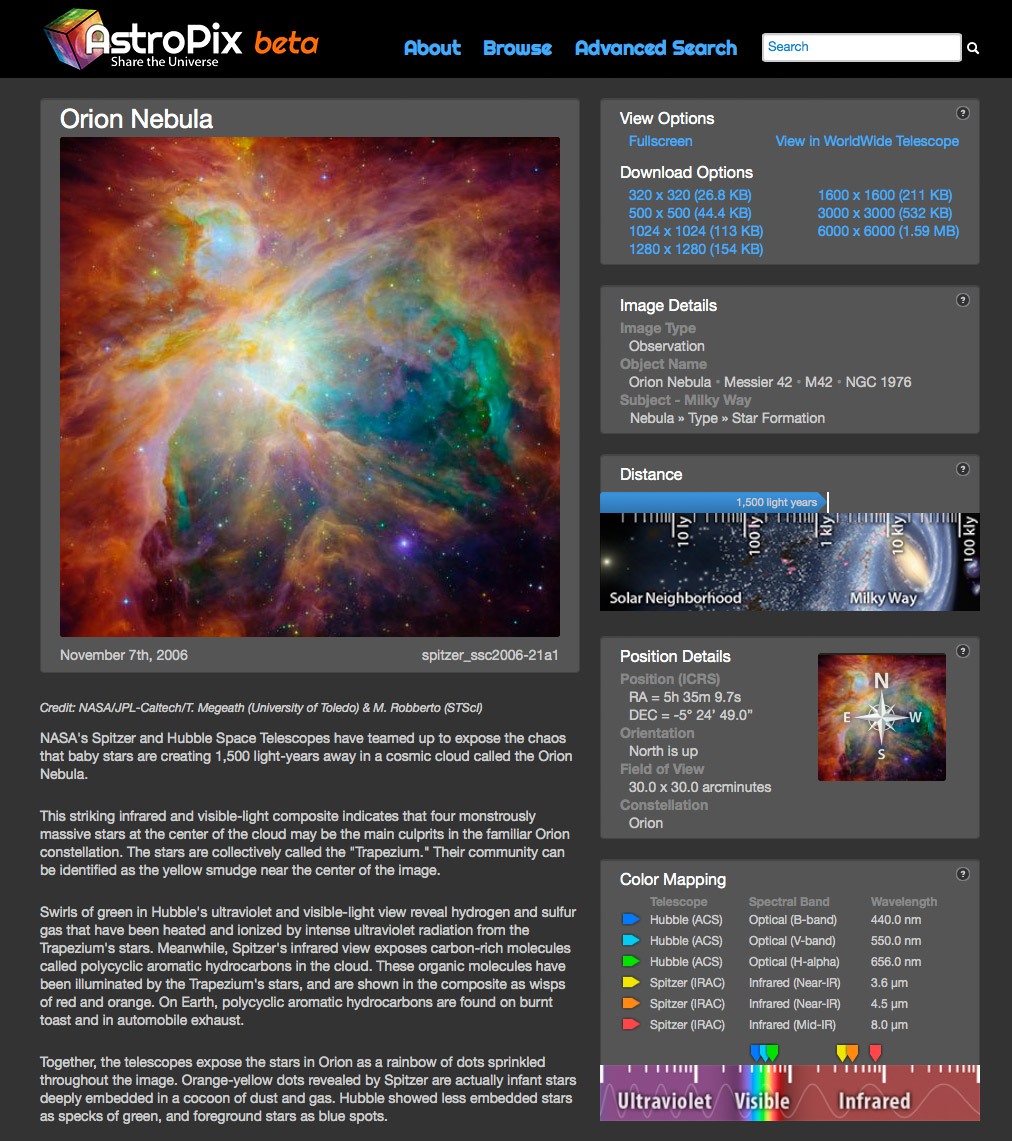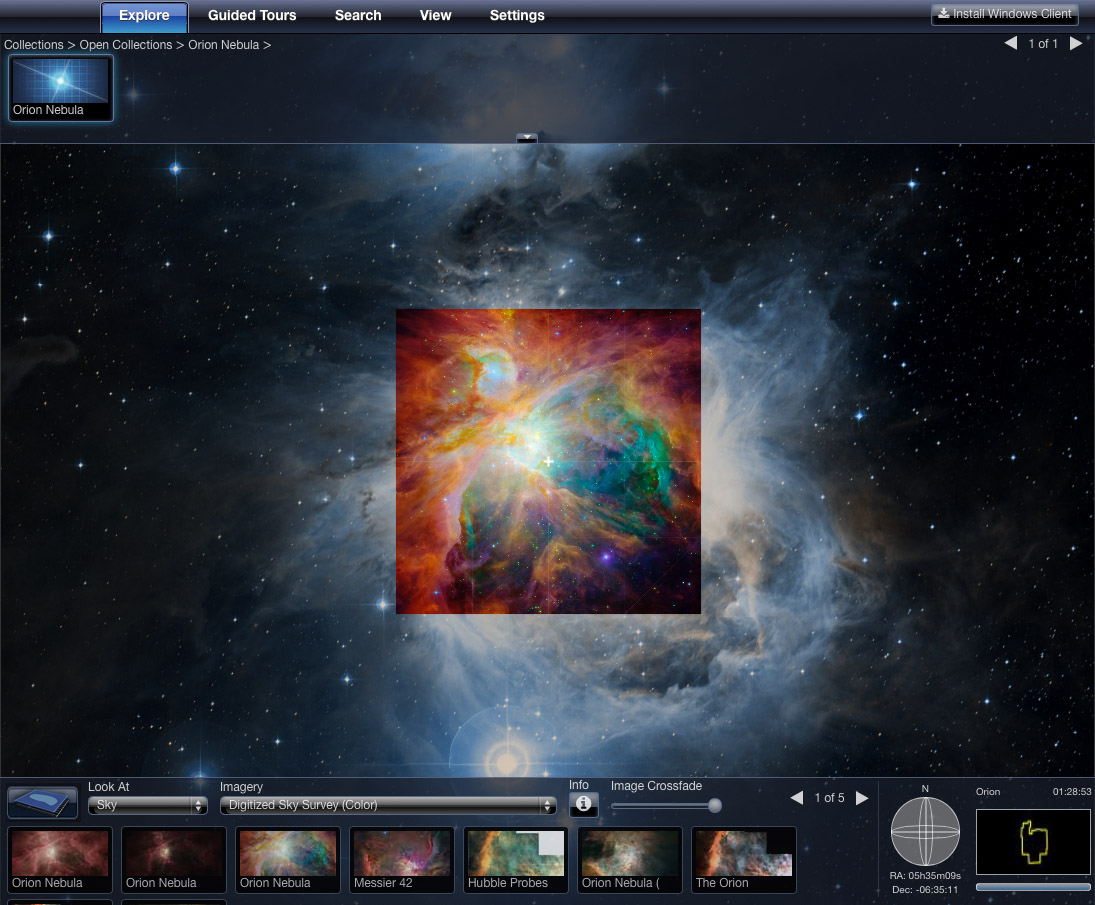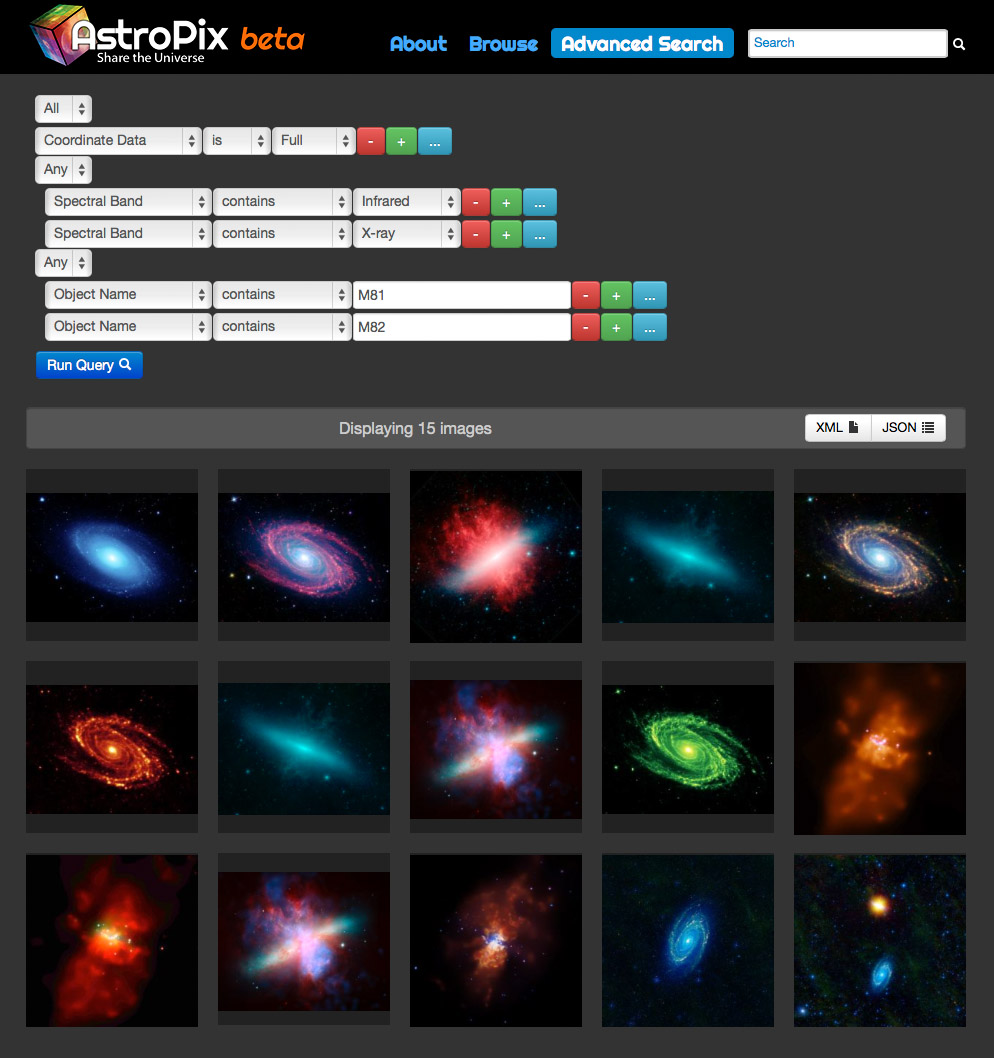This is a guest post by Robert Hurt at the Spitzer Science Center/IPAC. Robert is the Visualization Scientist, responsible for the public data renderings for many NASA missions including Spitzer, WISE, GALEX, and NuSTAR. For many years he has been leading the efforts to develop a common metadata standard for public-facing astronomical imagery.
How often have you tried to find pictures of a star-forming region and ended up staring at a collection of assault rifles? (Go ahead, google “M16”) Haven’t you wished you could locate the best public-friendly astronomy imagery without having to navigate search functions on a half-dozen observatory websites, or crossing you fingers that Google can somehow find the one you wanted?
Yeah, so did we, which is why we created the AstroPix Archive. This site provides one-stop shopping for some of the best public imagery released by a growing number of the premiere observatories on the ground and in space.

Metadata: The Context Behind the Pixels
One critical element lost in a typical web search is context. The same astronomy image may appear on dozens of different sites, cropped, scaled, and usually with no contextual information to explain what it is.
AstroPix imagery has been tagged using the Astronomy Visualization Metadata (AVM) standard that preserves a rich cross-section of contextual information, ranging from captions to full sky coordinates. AVM is built upon the IPTC standard universally-embraced by the photography and publishing industries, adding astronomy-specific tags.

The full metadata suite is embedded within the header block of every AVM-tagged image. Not only can you read all about the picture on the website, but if you download a copy, all of that info comes with it. If you open it in a photo management app, or upload it to Facebook, the basic information appears automatically.
Virtual Planetarium
Many AstroPix images are also tagged with sky coordinates. For these, you will find a “View in WorldWide Telescope” link that will pop open a new browser window that will take you to the image, viewed against a backdrop of the Digital Sky Survey (you can change this to many other all-sky surveys as well). Best of all, this is an HTML5 client that requires no browser plug-ins and runs on mobile devices.
Color Me Amazed
The AVM standard also allows observatories to include full color-mapping information allowing you to see at-a-glance how different wavelengths of light have been rendered in various colors for your viewing and lecturing pleasure.
Easy Search, Smart Search
Searching is as easy as typing in a few keywords in the title bar or browsing a selection of general topics. If you want to be more specific, AstroPix also offers a powerful structured search that allows you to match against subject codes, object names, telescope, spectral region, and so forth.

If you have created a useful search (for example, images of M81 or M82 that utilize either infrared or x-ray data that also contain coordinate data), you can generate a permalink that will give you updated results anytime you visit it. These linked searches also offer XML and JSON feeds that function as basic Application Programming Interfaces (APIs) that can be used by web and app developers.
Images, Courtesy of Many Collaborators
AstroPix is an image aggregator site that collects images from a variety of observatories. Participants provide an RSS feed listing all of their available AVM-tagged images, and AstroPix pulls them over into a central repository. The project is only possible due to the dedication of many collaborating institutions and observatories that currently include Chandra, ESA/Hubble, ESO, Herschel, NuSTAR, Planck, STScI, Spitzer, WISE. We are hoping to expand the collection, currently with over 5,000 assets, to include many other observatories.
Note that the goal of the AstroPix project is to connect users of all types to the public release imagery of research observatories. These images benefit from a wealth of contextual information as well as professional renderings of the observational data that make them accessible to the broadest cross-section of the public. Thus the image collections only cover a subset of the full archival research data of these observatories.
As AstroPix has matured into a stable public beta stage, we hope to include image assets of additional astronomical institutions in the near future. If you would like to see your observatory’s imagery included, contact us and we can help you get started!
AstroPix, Brought to You by IPAC
The AstroPix archive is a project of the IPAC Communications and Education team. While IPAC has a long history of providing research data archives to the astronomical community, this is its first entry into a public-friendly, outreach-oriented archive. We also maintain the AVM Toolkit site which provides a web interface for adding metadata to uploaded images.
Please try out the site and let us know what you think. Can you think of any innovative uses of the site? Do you know of other image archives that should be included? Please leave feedback and questions in the comments or contact us directly at astropix@ipac.caltech.edu.
This is really useful – especially the color mapping information is a nice feature that’s usually not easily searchable. As an add-on, it would be great if they could work with ApJ and A&A to include published images from papers, because those often have interesting overlays (like identified Young Stellar Objects, for example).